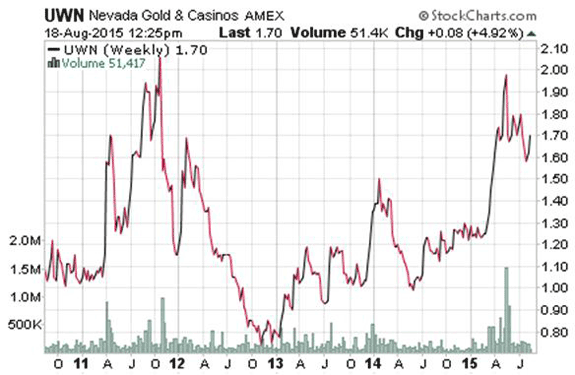Find Penny Stocks To Buy Right Now
 Want to find some penny stocks to buy right now?
Want to find some penny stocks to buy right now?
Turn up the volume.
Volume is a big deal when you want to know how to buy penny stocks. Different penny stock traders will give you different points of view, but all the pros agree on the fact that when you don’t have enough volume, you’ve got a problem.
The problem… not enough buyers out there. Not what you want when you’re sitting on a stock you want to sell.
How much volume is enough?
125,000 shares a day. If you’re feeling charitable, 100,000 shares a day.
And volume raises the question, “Are these buyers or sellers?”
Well, they’re both, since you can’t have a buyer without a seller. But here’s a way to get a better feel for what volume really means.
Use a chart that shows you daily up vs. down volume. These charts usually give you two bars with two different colors.
On one day of trading, there’s a green bar for buyers and a red bar for sellers. The higher green bar shows you that buyers outnumbered sellers. The higher red bar means the sellers outnumbered buyers for the day.
What good is this when you’re trying to find the best penny stocks to buy today?
How Volume Can Help You Find Penny Stocks To Buy Right Now
Look at volume trends. See if there’s been a buildup of sellers over the past week, or even the past month.
Compare what’s happening with buy and sell volume with what’s happening with the stock price.
There’s a case to be made for the fact that volume is more important for penny stocks investing than it is for investing in the widely traded blue chips.
Then again, it’s all relative.
A penny stock like Nevada Gold and Casinos $UWN has an average 3-month daily volume of just under 70,000. Apple’s $AAPL average daily volume is more than 48 million.
What kind of a volume trend do you want to look for?
Slow, constant, consistent volume growth that builds up over weeks is nice to see.
Just make sure there’s enough of it, more than 125,000 shares a day.
Jerky volumes should make you suspicious. Speculators could be up to something that you’re best to steer clear of.
And when you track volume over time, you start to see that high volumes tend to trigger the selloffs.
Want an example? Check out this chart for Nevada Gold & Casinos $UWN.

The first thing you notice is that daily volume is usually low… there are only a handful of days over the past few years when it’s been over 250,000.
Look at what happens to the stock price when volume is high… the price falls.
The periods of accumulation when the stock price slowly rises are periods when volume is fairly consistent.
The takeaway you can use to find penny stocks to buy right now…
Know what time it is. Know where in the overall scheme of things your penny stock is.
Has the stock just taken a hit? Is it plateauing after a big run-up? Or maybe it’s stuck in the doldrums, “trading in a narrow channel” as the technical guys like to say.
The Best Penny Stocks To Buy Today
Along with volume and volume trends, put the price in context… see where the stock price stands compared to where it was six months ago or a year ago.
You probably won’t find the best penny stocks sitting at a record high or crashing back down to earth.
Most of the time, they’re just plodding along.
So there you go… two great ways to get to know a penny stock better before you invest.
(And it only takes a minute to grab a chart so you can see what’s happening with volume and price.)
If you have a question about a stock or investment idea, shoot us an email or leave us a comment on the website.
Good investing…
Brian Kent
Note: If you’re interested in learning more about Brian Kent’s Penny Stock All-Stars premium service… and learning about the stocks we’re trading for profit… you can get the inside scoop on penny stocks here.
Category: Penny Stock Tips




